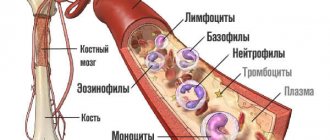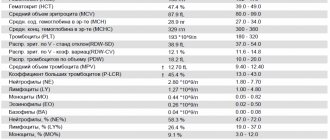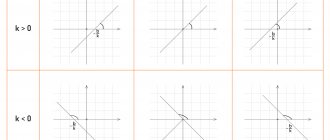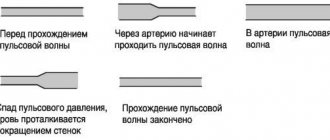What is a shunt
In electronics and electrical engineering you can often hear the words “shunt”, “shunting”, “bypass”.
The word “shunt” came to us from the bourgeois language: shunt - literally translated as “branch”, “transfer to a siding”. Therefore, a shunt in electronics is something that “adjacent” to an electrical circuit and “transmits” the electrical current in a different direction. Well, now it’s easier). In essence, a shunt is a simple resistor that has a low resistance, in other words, a low-resistance resistor. And no matter how strange it may sound: a shunt is the simplest current-to-voltage converter. But how is this possible? Yes, it turns out everything is simple!
Faulty device bypass[edit]
One example is miniature Christmas lights that are connected in series. When the filament in one of the incandescent lamps burns out, full line voltage appears across the burned out lamp. The shunt resistor, which was connected in parallel to the filament before it burned out, will then short-circuit to bypass the burned filament and allow the rest of the filament to ignite. However, if too many tubes burn out, the shunt will also burn out, requiring the use of a multimeter to determine the point of failure.
How does a shunt work?
So, we have a simple shunt. By the way, in the diagrams it is designated as a resistor. And this is not surprising, because this is a low-resistance resistor.
Let's agree to assume that our current is constant and flows from point A to point B. On its way it meets a shunt and flows through it almost unhindered, since the resistance of the shunt is very small. Do not forget that electric current is characterized by such parameters as Current Strength and Voltage. Electric current flows through the shunt with some force (I), depending on the load of the circuit.
Remember Ohm's Law for a section of an electrical circuit? Here it is:
Where
U - voltage
I - current strength
R - resistance
Our shunt resistance is always constant and does not change, simply put, “constant”. We can find out the voltage drop across the shunt by measuring it with a voltmeter as in the figure:
So, based on the formula
we get the formula:
and we draw a terribly simple conclusion: the readings on the voltmeter will be greater, the greater the current flowing through the shunt.
So what does this mean? This means that we can easily calculate the current flowing through the AB wire ;-). Everything ingenious is simple! And the most wonderful thing is, you know what? We don't even need to use an ammeter ;-).
This is the principle of operation of the shunt. And most often this principle is used precisely to expand the measurement limits of measuring instruments.
Calculation and manufacture of a shunt
The M367 ammeter has a maximum current measurement limit of 150 A. Obviously, an external shunt resistance is involved in determining such current values. Freed from the influence of the shunt element, the device acquires the properties of a milliammeter with a maximum current reading of 30 mA.
Consequently, varying different values of electrical resistance. link, any measurement area can be achieved. To confirm this in practice, you can create a shunt for an ammeter with your own hands.
Basic concepts and formulas
The value of the total current I is distributed between the shunt resistor (Rsh, Ish) and the meas. device (Ra, Ia) and is inversely proportional to the resistance of these sections.
Electrical resistance of the measuring circuit branch: Rsh=RaIa / (I-Ia).
To multiply the measurement scale by n times, the value should be taken: Rsh=(n-1) / Ra, while the indicator n=I/Ia is the shunt coefficient.
Calculation of the shunt link
To calculate the microammeter shunt, you can use data about the measuring head of the device: frame resistance (Rram), the current value that corresponds to the maximum deviation of the indicator needle (Iind) and the largest value of the predicted current measurement scale (Imax). The maximum measured current will be 30 mA. The value of Iind is determined experimentally. To do this, a variable resistor R, a scale indicator and a measuring tester are connected in series to the electrical circuit.
Types of shunts
Industrial ammeters look like this:
In fact, no matter how strange it may sound, these are voltmeters. It’s just that their scale is drawn (graduated) with calculations according to Ohm’s law. In short, it shows the voltage, and the count is in Amperes ;-).
On one of them you can see the measurement limit even up to 100 Amperes. What do you think, if you put such a device in an open circuit and pass a current of, say, 90 Amps, will the thin wire of the measuring coil inside the ammeter withstand it? I think there will be white thick smoke). Therefore, such measurements are carried out only through shunts.
And here, in fact, are industrial shunts:
Those on the bottom right can pass through themselves a current of up to a kiloampere or more.
Each industrial ammeter comes with its own shunt. To start using an ammeter, it is enough to assemble a shunt with an ammeter according to this diagram:
In some ammeters, this shunt is built directly into the body of the device itself.
Use of electronic filters in circuits[edit]
The term shunt is used in filters and similar ladder circuits to refer to the components connected between line and common. The term is used in this context to distinguish shunt components connected between the signal and return lines from components connected in series along the signal line. More generally, the term shunt can be used for a component connected in parallel with another. For example, a shunt m derivative of half a section
is the common filter section from the impedance image of the filter design method. [2]
Shunt operation using a practical example
Our guest is the most ordinary industrial shunt for an ammeter:
On the back you can read its markings:
How to read the characteristics of such markings? Everything is simple here! This means that if the current flowing through the shunt is 20 Amps, then the voltage drop across the shunt will be 75 millivolts.
0.5 is an accuracy class. That is, how much we measured - this value will have an error of 0.5% of the measured value. That is, let's say we measured a voltage drop of 50 millivolts. The measurement error will be 50 plus or minus 0.25. Such accuracy is quite enough for industrial and radio-electronic needs ;-).
So, we have a simple 12-volt car light bulb:
We set the voltage on the Power Supply to 12 Volts, and connect our light bulb. The light bulb lights up and we immediately see how much current it consumes, thanks to the built-in ammeter in the power supply. Our lamp is 1.7 Ampere.
Let's assume we don't have a built-in ammeter in the power supply, but we need to know how much current passes through the light bulb. To do this, we put together a simple diagram:
And we measure the voltage drop on the shunt itself. The result was 6.3 millivolts.
Since we know that at 20 Amps the voltage across the shunt will be 75 millivolts, how much current will flow through the shunt if the voltage drop across it is 6.3 millivolts? We remember the mathematics teacher Maryivanna and solve a simple proportion for the 5th grade 
Do we remember what our power supply showed?
Error of 0.02 Ampere! I think this can be attributed to instrument error).
Since radio amateurs mostly use low voltage and current in their electronic gadgets, you can apply this principle to your designs. To do this, it will be enough to take a low-resistance resistor and use it as a current sensor). As they say, “the need for invention is cunning” 
What is a shunt in electronics and a video about it:
Lightning arrester[edit]
A gas-filled pipe can also be used as a shunt, particularly in a lightning rod. Neon and other noble gases have a high breakdown voltage, so no current will normally flow through it. However, a direct lightning strike (such as into a radio tower antenna) will arc the shunt and conduct enormous amounts of electricity to ground, protecting transmitters and other equipment.
Another older form of lightning arrester uses a simple narrow spark gap through which the arc will jump when high voltage is present. Although this is an inexpensive solution, its high operating voltage provides little protection for modern solid-state electronic devices powered from a protected circuit.
Shunts as circuit protection [edit]
When a circuit must be protected from overvoltages and there are failure modes in the power supply that can cause such overvoltages, the circuit may be protected by a device commonly called a crowbar circuit. When this device detects an overvoltage, it causes a short circuit between the power supply and its return. This will cause both an immediate voltage drop (protecting the device) and an instantaneous high current, which is expected to open a current sensitive device (such as a fuse or circuit breaker). This device is called a crowbar,
as it can be compared to dropping a real crowbar onto a set of busbars (exposed electrical conductors).
Measurement of small resistances, shunts
In this article we will try to learn how to measure small resistances. Radio amateurs sometimes have a need to accurately determine the resistance of a shunt when making or repairing an ammeter, so that it, in turn, also accurately displays its units of measurement or for other purposes. But how to do this when the multimeter does not have a milli-ohm scale, the markings are either absent or completely unknown and incomprehensible? Most measuring instruments have a minimum scale of 200 Ohms for measuring resistance and 3.5 - 4 digits, when you short-circuit the probes there is already about 0.7 Ohms, when measuring resistance 0.1 Ohms nothing changes, trouble. Let's fix it now.
I suggest using a bridge measurement circuit for this purpose. Everyone should understand what a bridge is; we won’t dwell on that. Let's make a bridge of resistors, apply some voltage to it and measure it, although we can also measure the current, it won't make a difference; we choose what is more accurate at hand. So what does low resistance measurement have to do with it? Patience, everything is in order from afar. There is such a wonderful thing as bridge balance. The product of the resistances of the opposite arms of the bridge, provided it is balanced, will be the same. And voltages and currents, when the bridge is balanced, will cancel each other out and give a total of 0.
(Let R0 be R3 and Rx be R4)
or
So, based on the above, if instead of one of the resistors we put our small resistance of an arbitrary value in the bridge, and make the other resistor variable or tuning (according to the diagram, we use two variable resistors to accurately balance the bridge, especially in the case when there are no multi-turn variables at hand resistors) to achieve bridge balance. This circuit can be used to measure shunts and small resistances:
It was lazy to assemble the circuit, especially since it takes a lot of time to make the board, so an experimental sample of the circuit was made by hanging installation. Here, resistors R1 and R2 are not 1%, but they were selected as close as possible to the resistance of a given value, the resistance error did not exceed 0.5% at room conditions.
But you need to know how to get the exact value of the measured resistance. Firstly, the main feature of such a circuit is that it “multiplies” the measured resistance. This means that there is no need for a milli-ohm scale in a multimeter. A resistance of 0.1 Ohm can already be measured on a kilo Ohm scale. Only the measurement will now be not direct, but indirect; you will have to use a little mathematics and calculate the final result of the measurement.
Let's decide what range of ratings we will measure (meaning low resistance or shunt resistance). To do this, you need to select the values of the variable resistors:
According to the circuit, we use two variable resistors for greater interaction accuracy, 1 kOhm and 100 Ohm. This resistance of variable resistors will allow you to measure the maximum resistance of 1.1 ohms, the minimum while maintaining measurement accuracy of 0.01 ohms (with Rx = 0.01 ohms R0 should be 10 ohms, which also need to be measured quite accurately with your multimeter)
And the values of constant resistors, so that the bridge can be easily balanced and it is convenient to calculate the value of the shunt or small resistance:
The multiplicity of resistors relative to each other is best taken exactly like this - 10, 100, 1000, in order to quickly calculate the final result, although no one forbids taking non-round numbers, so that later
Links[edit]
- Rudolph F. Graf, Modern Dictionary of Electronics
, Mc-GrowHill, 1968 Library of Congress 68-13873
shunt
page 454. - Mattei, Young, Jones Microwave Filters, Impedance Matching Networks, and Coupling Structures
, p66, McGraw-Hill 1964 - ^ a b Manual of Electrical Tools
, General Electric, 1949, pages 8–9. - Terrell Croft, The American Electrical Worker's Manual
, McGraw-Hill, 1948. 70 - R. Dzyuba; N. B. Beletsky; J. F. Mayo-Wells. "Stability of Double-Wall Manganin Resistors" (PDF). In David R. Lead (ed.). A Century of Excellence in Measurement, Standards, and Technology: A Chronicle of Selected NBS/NIST Publications 1901–2000
. pp. 63–65. CiteSeerX 10.1.1.208.9878. DOI: 10.6028/NIST.SP.958. NIST SP 958. Ten of these served exclusively as the US impedance standard from 1939 until they were superseded by the Quantized Hall Effect (QHE) in 1990.
A shunt tool, but connected in series to the circuit[edit]
AC source with meters and meter shunts plus load with load shunt
As an introduction to the next chapter, this figure shows that the term "shunt resistor" should be understood in the context of what it shunts.
In this example, resistor RL will be understood as a "shunt resistor" (to load L) because this resistor will pass current around load L. RL is connected in parallel to load L.
However, series resistors R M1 and R M2 are low ohm resistors (as in the photo) designed to pass current through devices M1 and M2 and function as shunt resistors to those devices. R M1 and R M2 are connected in parallel with M1 and M2. When viewed without instruments, these two resistors would be considered series resistors in this circuit.
Diodes as shunts[edit]
If devices are vulnerable to reverse signal or power supply polarity, a diode can be used to protect the circuit. When connected in series to a circuit, it simply prevents reverse current flow, but when connected in parallel, it can bypass reverse power supply, causing the fuse or other current limiting circuit to open.
All semiconductor diodes have a threshold voltage—typically ½ Volt to 1 V—that must be exceeded before significant current will flow through the diode in the normally permissible direction. Two back-to-back bypass diodes (one to conduct current in each direction) can be used to limit the signal passing through them to no more than their threshold voltage, to protect later components from overload.










